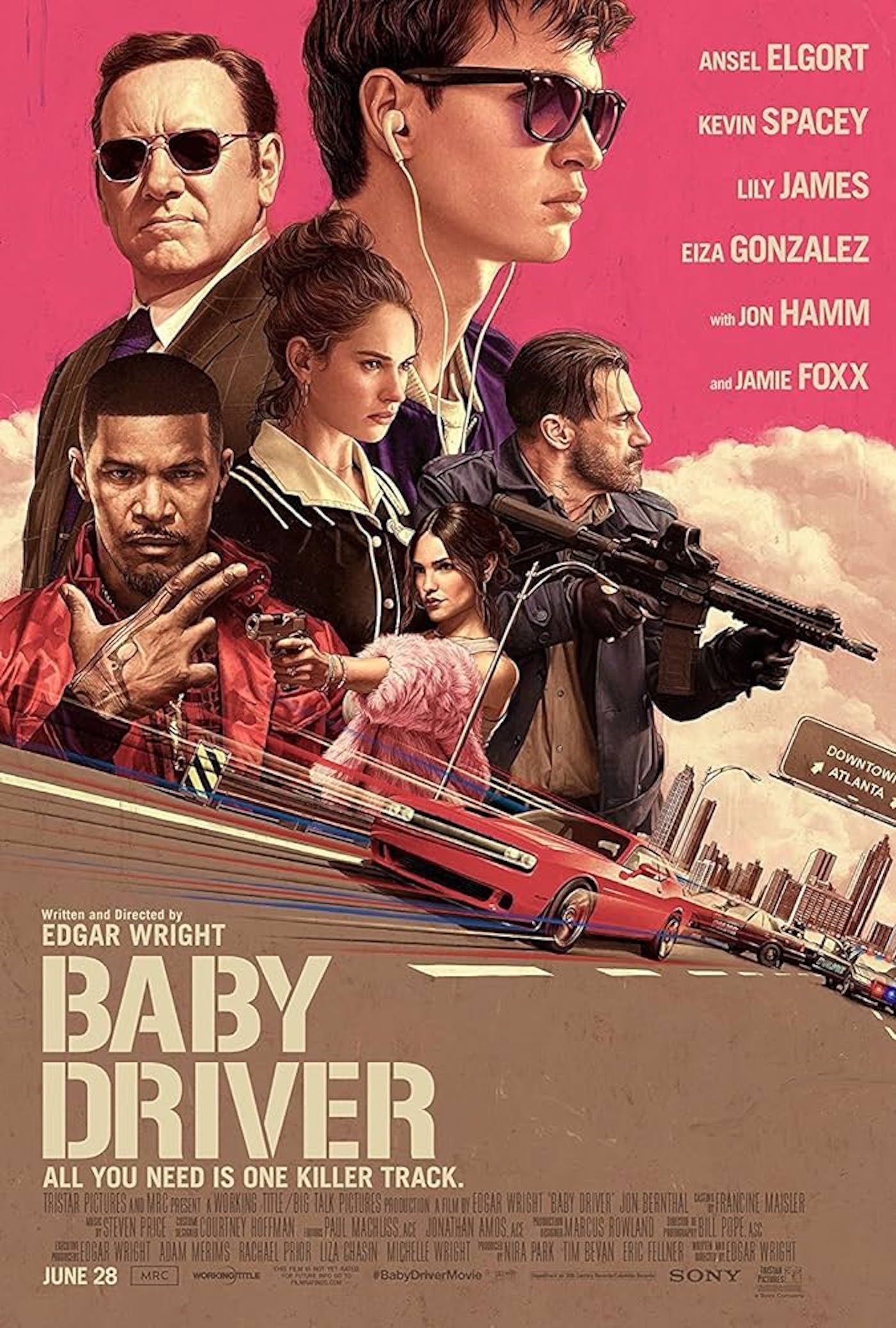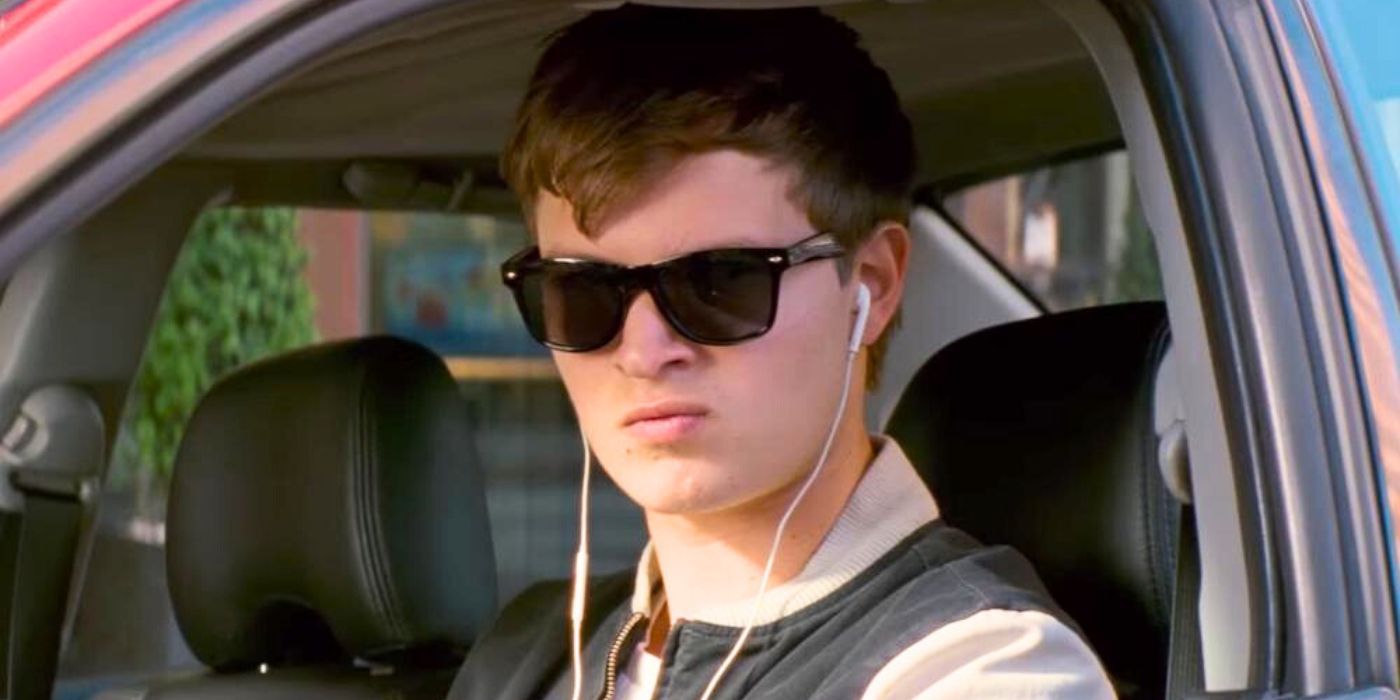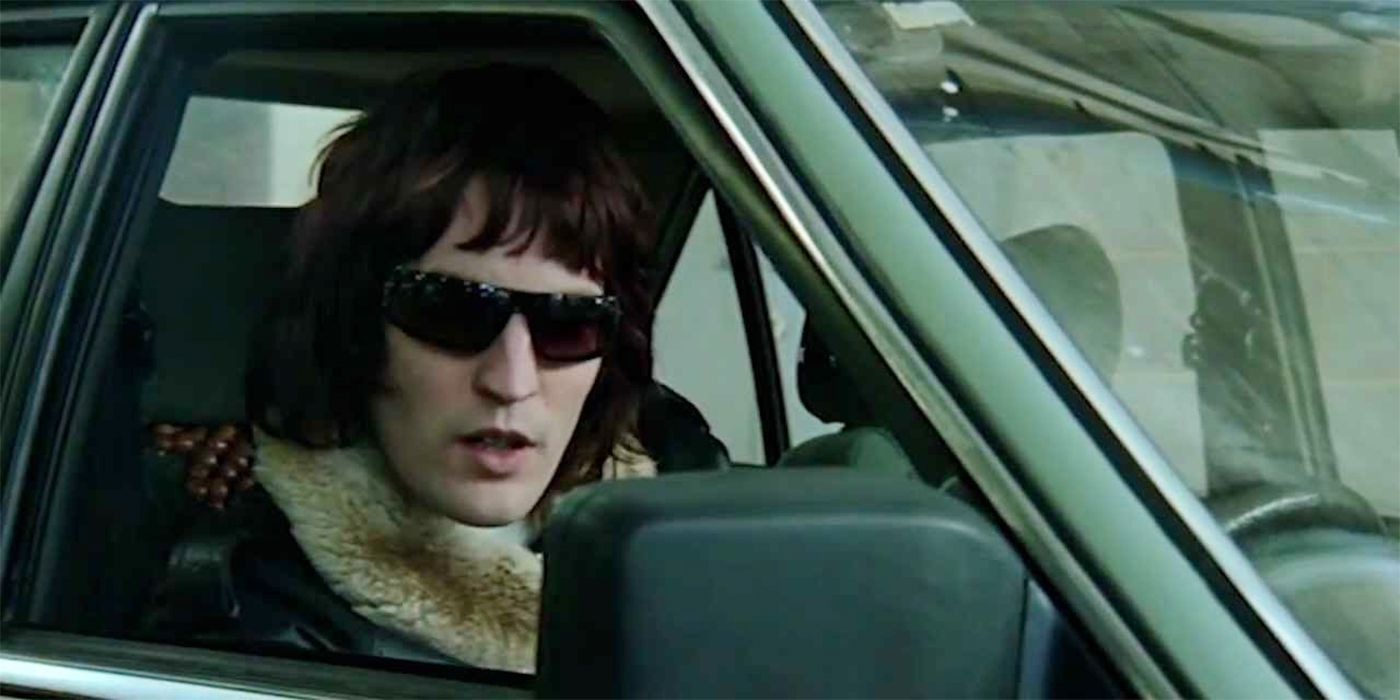The Big Picture
- Edgar Wright evolved a music video concept by Mint Royale's "Blue Song" into Baby Driver with a stellar soundtrack and rhythmic editing.
- The film's protagonist, Baby, uses music to block tinnitus, making the soundtrack integral to his character.
- Baby Driver creatively synchronizes the action, music, and editing in a way that stands out among other films.
Ten years after Edgar Wright made a masterfully funny send-up of the action genre with Hot Fuzz, he released a straight-up action thriller packed with heists, car chases, and shootouts, Baby Driver. Wright has made a career out of stylish genre-fare, often making movies that knowingly play with tropes of their respective genres for comedic effect. While Baby Driver is not as comedic in tone, the style is still there in spades. Baby Driver follows a young getaway driver, Baby (Ansel Elgort), who works with a rotating crew of criminals portrayed by Jon Hamm, Eiza Gonzalez, Jamie Foxx, and more. When Baby meets Debora (Lily James) at a local diner, the two hit it off and dream of hitting the road together. The film charts Baby's attempts to distance himself from the criminal world while being coerced to continue driving for the crew, and the conflicts that arise when tension builds between a group of violent people with nothing to lose. It is a slick crime movie that is memorable for its many great action sequences. These scenes are heavily boosted by the film's impressive and innovative weaving of visual editing, sound editing, and soundtracking to create a rhythmic, musical experience out of an action movie.

Baby Driver
After being coerced into working for a crime boss, a young getaway driver finds himself taking part in a heist doomed to fail.
- Release Date
- June 28, 2017
- Director
- Edgar Wright
- Cast
- Ansel Elgort , Jon Bernthal , Jon Hamm , Eiza Gonzalez , Micah Howard , Lily James
- Runtime
- 115
- Main Genre
- Action
- Writers
- Edgar Wright
- Studio
- Sony Pictures
- Tagline
- All you need is one killer track.
- Website
- http://www.babydriver-movie.com
How Edgar Wright Expanded a Music Video Concept Into 'Baby Driver'
The film's concept stemmed from Wright imagining a getaway chase soundtracked by the driver while listening to the Jon Spencer Blues Explosion song "Bellbottoms." This exact idea ended up being used as the opening sequence of the film, but Wright almost passed on making the movie entirely after worrying that he exhausted the concept in a music video he made in 2003.
Wright directed a video for "Blue Song" by Mint Royale which followed the same concept of a getaway driver, portrayed by comedy troupe The Mighty Boosh's Noel Fielding, listening to a song through the car speaker system while waiting for the group of thieves, portrayed by fellow Mighty Boosh member Julian Barrattt and Wright's Spaced cast members, Nick Frost and Michael Smiley, to return with their haul. Wright explained to The Guardian in 2017 that he fell back on this idea he had originally developed in 1995 when he could not think of anything else to do for the music video, and felt concerned about re-using it for a feature film. Wright recalls that J.J. Abrams even told Wright at a film festival that the video would make a great feature, and Wright replied, "Trust me, I'm way ahead of you."
The video turned out to work as a great proof-of-concept for Wright's feature, and Baby Driver may never have happened without it. It goes to show that sometimes an idea can come along that needs a pass or two before reaching its full potential. For example, if directors were afraid to recycle ideas for the purposes of refining and perfecting them, Michael Mann would have stopped with L.A. Takedown, and we never would have gotten Heat. Baby Driver needed the time and resources and experience to make it to the big screen, and the "Blue Song" music video proved that it was a thrilling idea.
Aside from the opening sequence, Wright's film contains a massive collection of pop needle-drops from the likes of Queen, The Commodores, The Beach Boys, and Simon and Garfunkel, whose fifth album included the song from which the film got its name. The soundtrack informs everything about the way the movie feels. The music is the backbone of the film, which feels appropriate for a movie that was born out of a concept that first came to fruition as a music video.
'Baby Driver' Is Edited Around Music, Giving the Action a Propulsive Rhythm
Sound is a key component in any movie, but especially one that is embellished with engine-revving and gun-blazing action. Baby Driver is up to the task of crafting an interesting aural experience that makes the dazzling action and compelling story hit even harder. The film's opening sequence immediately pulls out all the tricks that will recur throughout the runtime, with elements like the car's blinkers and windshield wipers, Baby changing gears, the accelerator being floored, and gunfire all being cut and timed perfectly in sync with the rhythm of "Bellbottoms."
The rhythmic, quick cutting-to-music idea could have bottomed out quickly, coming off as an overbearing gimmick that the movie wore thin after a while. It can also feel uninspired when movies rely on fairly obvious needle drops from the popular music canon throughout the soundtrack, how many times are we going to have to hear "Bohemian Rhapsody" misused in a bad action movie? Wright had the wisdom to at least pick a different Queen song, "Brighton Rock." Baby Driver somehow threads a needle where all of the choices made in terms of the music and sound editing work as a stylish flourish while also building upon the narrative.
Baby is a character whose entire life is centered around music. He plays music near constantly to drown out the tinnitus that resulted from a childhood car accident that claimed his parents' lives. The music is a safe place for Baby, and the soundtrack that the audience hears is often a soundtrack that the characters are hearing in-universe as well. The songs convey a lot about Baby's emotional state, and they are good picks. Wright didn't go the obvious route, they are songs people know but largely not songs that we have heard in a hundred movies over the years. "Bellbottoms" is especially a perfect pull, a song that works marvelously in the opening sequence which may be the highlight of the movie from a pure technical filmmaking perspective.
Wright takes an ambitious idea, timing every beat of an action sequence to the soundtrack, and manages to pull it off through multiple, impressive shootouts, chases, and heists that all feel distinctive from one another. The movie never runs out of gas, because the music never allows it to. Building a crime movie so crucially around the soundtrack is the kind of idea that could be attempted a million different ways, but Wright's method turned an already-compelling crime story into a musical experience that is a genuine masterclass for the intersection of sound and editing. If you want to understand how to use music to propel a story, look no further than Baby Driver.
Baby Driver is available to stream on Netflix in the U.S.


